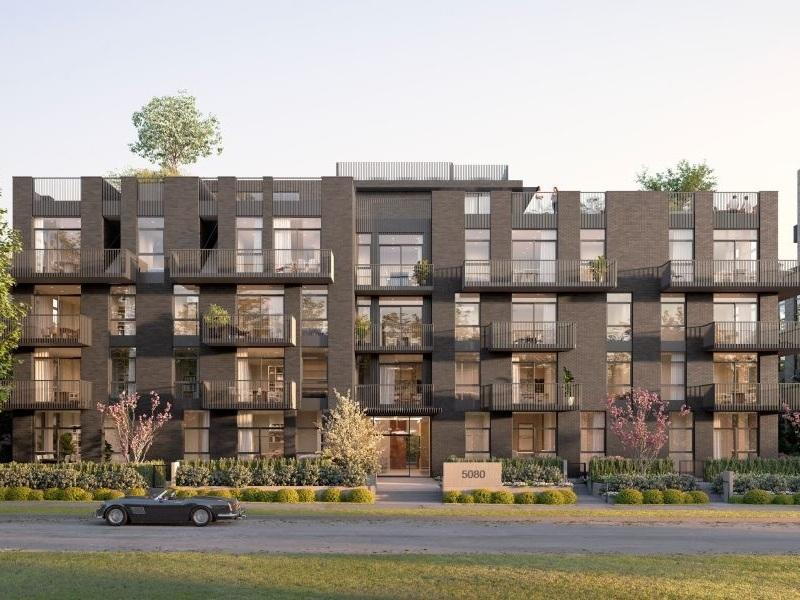
Developer and builder The Daniels Corporation wants to raise the standard for accessible multiresidential housing by releasing its own internal guidelines, which exceed the requirements of Ontario’s building code.
The Toronto-based company publicly released the technical standards guide to its Accessibility Designed Program (ADP) earlier this month, unveiling how it develops multi-unit housing for disabled and elderly Canadians.
It touches on a diverse range of features, from wider door frames in bedrooms and other living spaces, to installing light fixtures at a height accessible to all, and installation of automated doors to enter the suite and/or the balcony.
In common areas, Daniels has mapped out a concierge desk that is at eye level for people using a wheelchair, carpeting which is amenable to wheelchairs, a garbage chute room with an automated door, and signage that is highly visible and includes braille.
Created for use across purpose-built rentals, condos, and housing for students and seniors, Daniels is “signalling accessibility doesn’t need to be a trade secret or a competitive advantage”, but a “shared responsibility” in the industry, chief operating officer Jake Cohen told RENX Homes.
“We’re trying to use the guide as a way to call to action for the developers, the architects, the policymakers to truly download the guide, implement these standards where possible, and really make sure that accessibility for housing is a priority and not an afterthought,” he said.
How Daniels is incorporating accessibility
Daniels, which has built over 40,000 housing units mostly in the Toronto area, has standardized and incorporated the ADP guidelines in the majority of its condo and rental suites over the past five years, Cohen said. Specific projects include Daniels on Parliament in Regent Park.
The standard has been implemented in guest suites to three-bedroom units, in specific rooms such as kitchens or bedrooms, and common areas like lobbies and washrooms. Daniels’ aim by sharing its standard is to provide a blueprint that any developer or builder can use in their projects, he explained.
With approximately 15 per cent of Ontarians above the age of 15 having a disability according to the Ontario Human Rights Commission, housing that accommodates their needs is a critical issue. Activists have called out the shortage of accessible housing and feel Ontario’s laws have not kept up with the increasing number of disabled and aging Canadians.
The higher cost of accessibility upgrades has been blamed as part of the problem, with these features costing thousands of dollars per home in some condos, according to CMHC and other data cited in an article in The Mississauga News.
Cohen, however, said tackling costs associated with accessibility features can start from the design level.
Daniels’ ADP units are “snapped up very, very quickly” he said, as buyers and renters recognize they are unique, allow for aging-in-place, and do not come with a cost premium.
There is more work to be done in the field, Cohen said. The ADP guide will hopefully used as “a new standard” that can be tweaked for enhancements.
Empowering the sector

Daniels’ decision to launch the ADP guidelines “really helps empower all developers to make these decisions,” according to Heidi Green, co-chair of the Accelerating Accessibility Coalition (AAC).
The organization consists of developers, accessibility advocates, governments and educational institutions, including Daniels and RioCan REIT where Green serves as director of development.
The coalition was founded in 2022 to deliver more accessible housing, particularly in high-rise mixed-use buildings. Green said she hopes this release of the guidelines by Daniels will provide guidance to developers and enhance the AAC's mission.
The housing industry must figure out how to lower the costs of building accessible housing, she said, particularly in light of elevated interest rates and construction costs.
“How do we ensure that we are designing something that actually ends up getting built?”
Daniels does not intend to stop at multiresidential buildings. Cohen said the company is developing its accessibility standard for semi-detached homes, townhomes and back-to-back stacked townhomes, which are more complicated due to stairwells.
Other areas of accessible housing Daniels is exploring are low-rise housing, exteriors, landscaping, exits and entrances, he said.
Daniels will also be taking part in a ULI Toronto presentation, Breaking Barriers: New Tools Launched to Make Canadian Homes Truly Accessible, about the guidelines on March 5, for those seeking more information.










